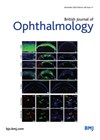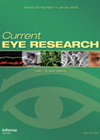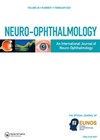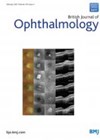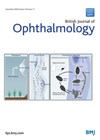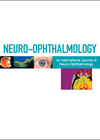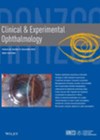
Journal Reviews
Visual acuity outcomes after cataract surgery in type 2 diabetes (NIDDM): the action to control cardiovascular risk in diabetes (ACCORD) study
This is a retrospective case-control study of 1136 eyes enrolled in the 784 ACCORD patients receiving cataract surgery between 2001-2014. 362 / 1136 eyes had gradable fundus photography for diabetic retinopathy (DR). Seven hundred and sixty-two eyes (67.1%) achieved 20...
Vision screening standards for fitness to drive
Most countries require that vision meets a pre-defined standard in order to be legally permitted to drive, but these standards vary widely. The primary method by which vision is assessed to determine suitability for driving is by measuring visual acuity...
A survey of neuro-ophthalmologists on use of corticosteroids in giant cell arteritis
While corticosteroids are the mainstay of treatment in giant cell arteritis (GCA), the type, dose, route and duration of treatment remains controversial. The authors surveyed 180 neuro-ophthalmologists on their use of this treatment via email in a two-month period. Results...
Detection of post stroke visual impairment in variety of cohorts
The Impact of Visual Impairment after Stroke (IVIS) study introduced a standardised vision assessment protocol across three acute stroke units in the northwest of England, with a similar demographic population (predominantly white British). The study reported similar rates of visual...
Detailed overview of diplopia causes and outcomes for a single tertiary care centre
The purpose of this study was to study the aetiology, progression and outcome in patients with binocular diplopia presenting to the ophthalmology department of a tertiary care centre in India. The study had a prospective observational design where all patients...
Visual outcomes after surgery for primary RRD in era of microincision vitrectomy
This is a prospective, multicentre, nationwide study between 2016 and 2017, to investigate the preoperative ocular factors, surgical techniques (pars plana vitrectomy (PPV) or scleral buckling (SB), or combined procedures) for rhegmatogenous retinal detachment (RRD) and postoperative best corrected visual...
Visual outcomes after surgery for primary rhegmatogenous retinal detachment in era of microincision vitrectomy
This is a prospective, multicentre, nationwide study between 2016 and 2017, to investigate the preoperative ocular factors, surgical techniques (pars plana vitrectomy (PPV) or scleral buckling (SB), or combined procedures) for rhegmatogenous retinal detachment (RRD) and postoperative best corrected visual...
Visual and refractive outcomes and complications in FLACS versus CPS cataract surgery
This is a randomised, controlled study of 110 paired eyes from 55 patients that were randomised into either femtosecond laser-assisted cataract surgery (FLACS) or conventional phacoemulsification cataract surgery (CPS) groups. Visual, refractive outcomes, intraocular pressure (IOP) and complications were compared...
Characteristics of Charles Bonnet syndrome in patients with neovascular AMD
This retrospective cross-sectional study aimed to characterise various aspects of Charles Bonnet syndrome hallucinations among patients with neovascular age-related macular degeneration (AMD). Five hundred and ten consecutive patients were asked a screening question to determine if they had ever suffered...
Mechanism of colour vision involvement in multiple sclerosis
There is evidence to show that the optic nerve and retina are affected in multiple sclerosis (MS) even without any clinical evidence or history of optic neuritis (ON). MS without optic neuritis causes colour-vision deficit, however, the evidence for selective...
Glaucoma and capillary perfusion
Elevated IOP is important but not the sole factor responsible for retinal ganglion cell (RGC) death and optic nerve damage in glaucoma. There is increasing evidence that visual loss correlates with macular inner retinal thinning. A total of 148 eyes...
Effect of cataract surgery on inflammation control and vision in uveitis patients
This retrospective longitudinal study from Moorfields, London, UK compared uveitis recurrence rates and vision loss in 309 eyes of uveitis patients post cataract surgery to 300 control uveitis patients. Cataract is a common complication associated with uveitis and leads to...

